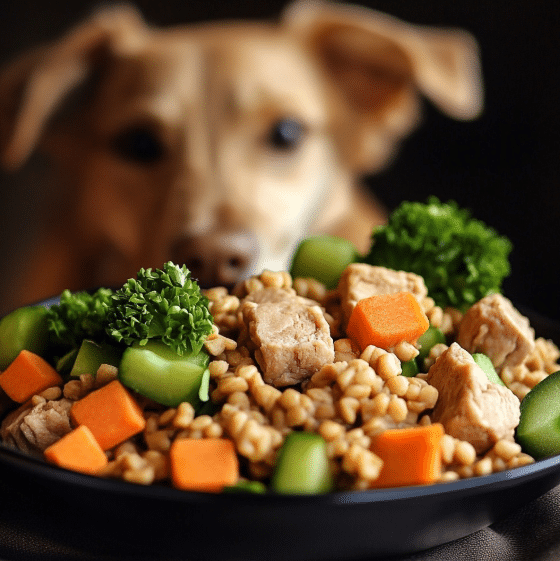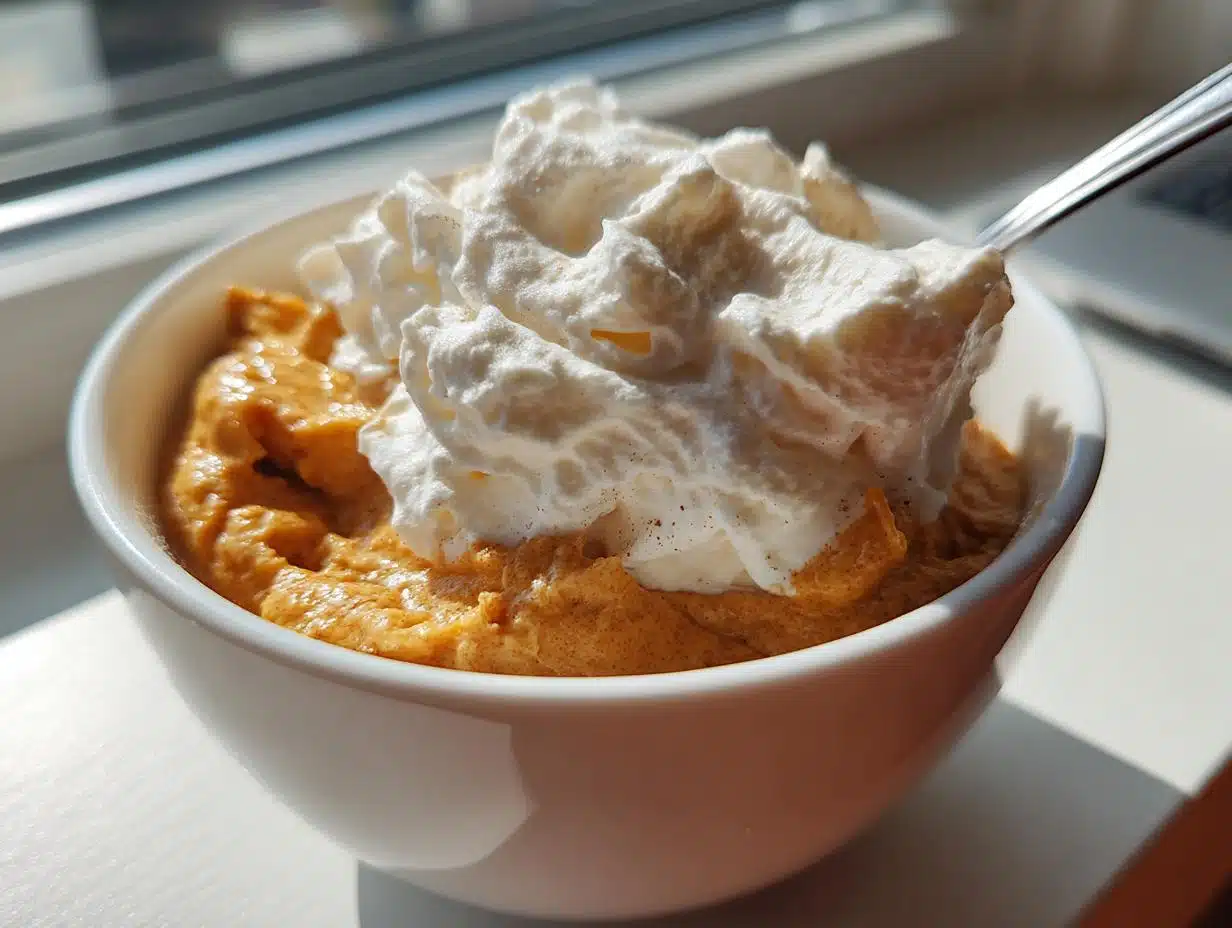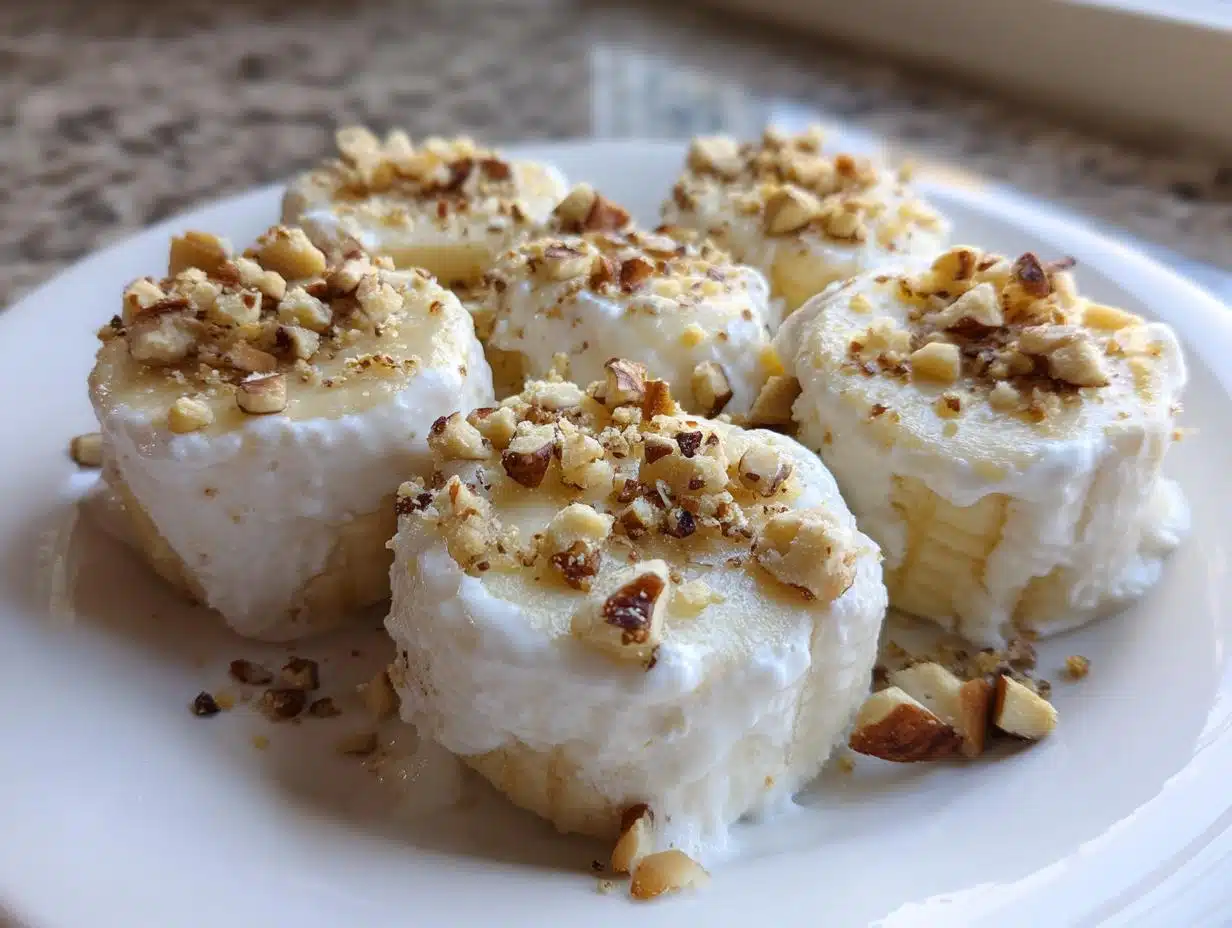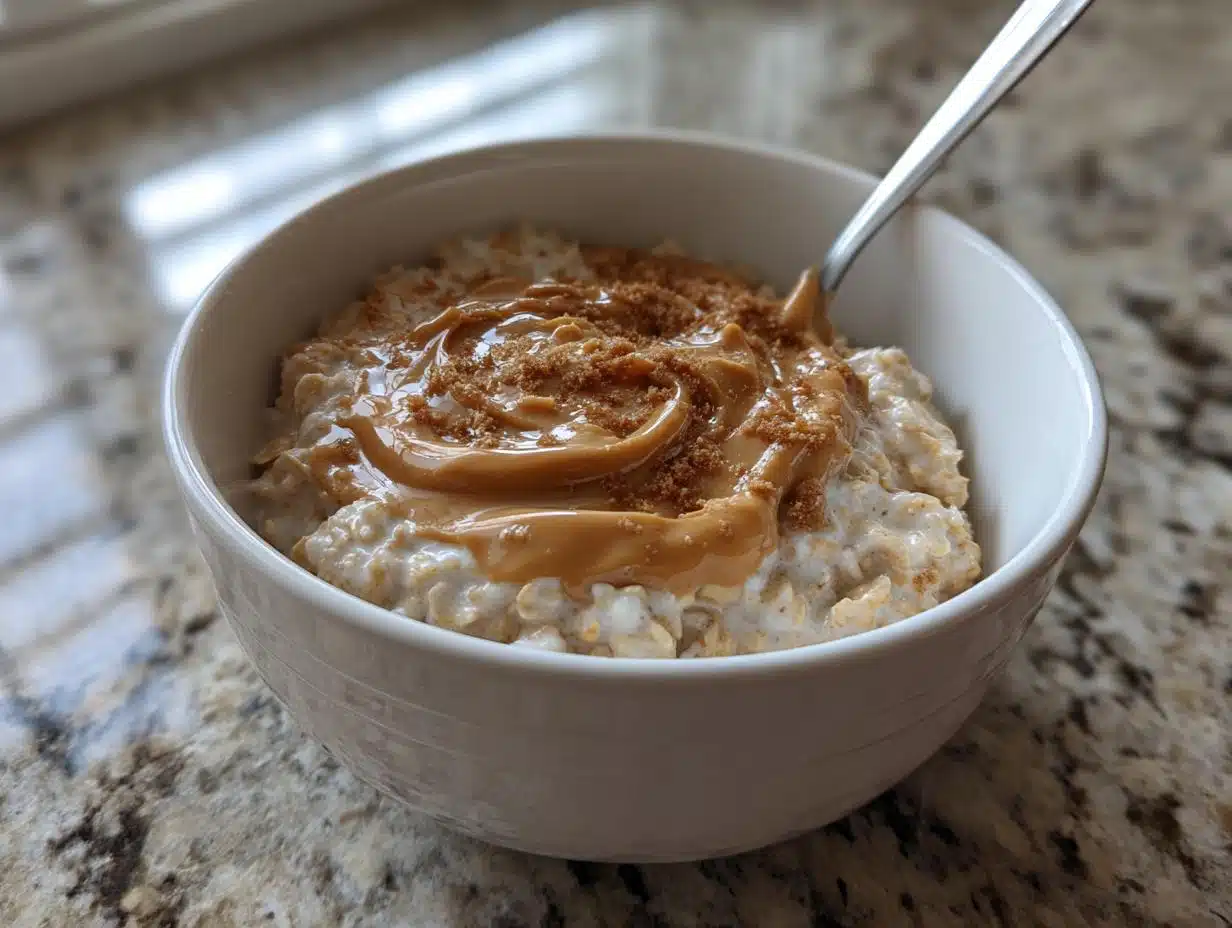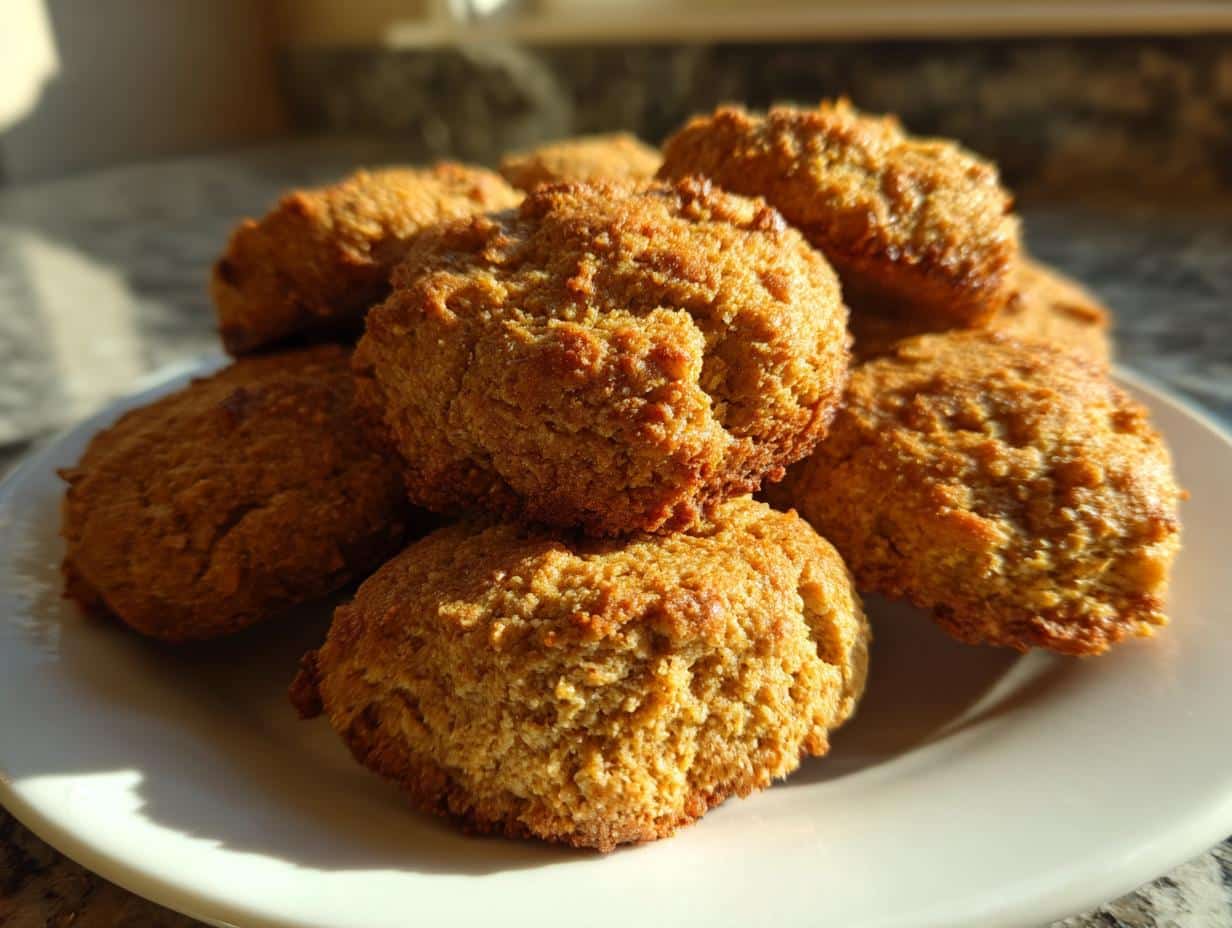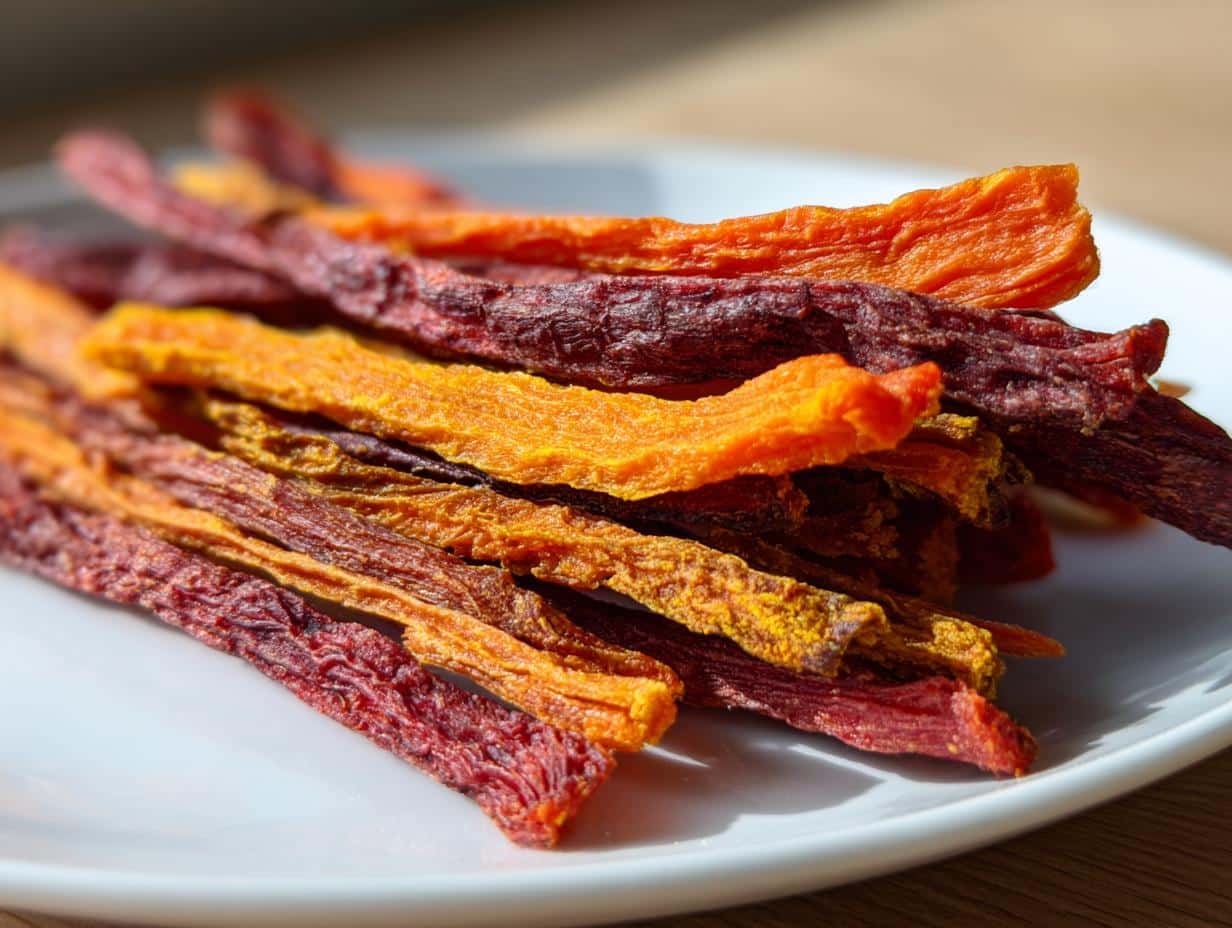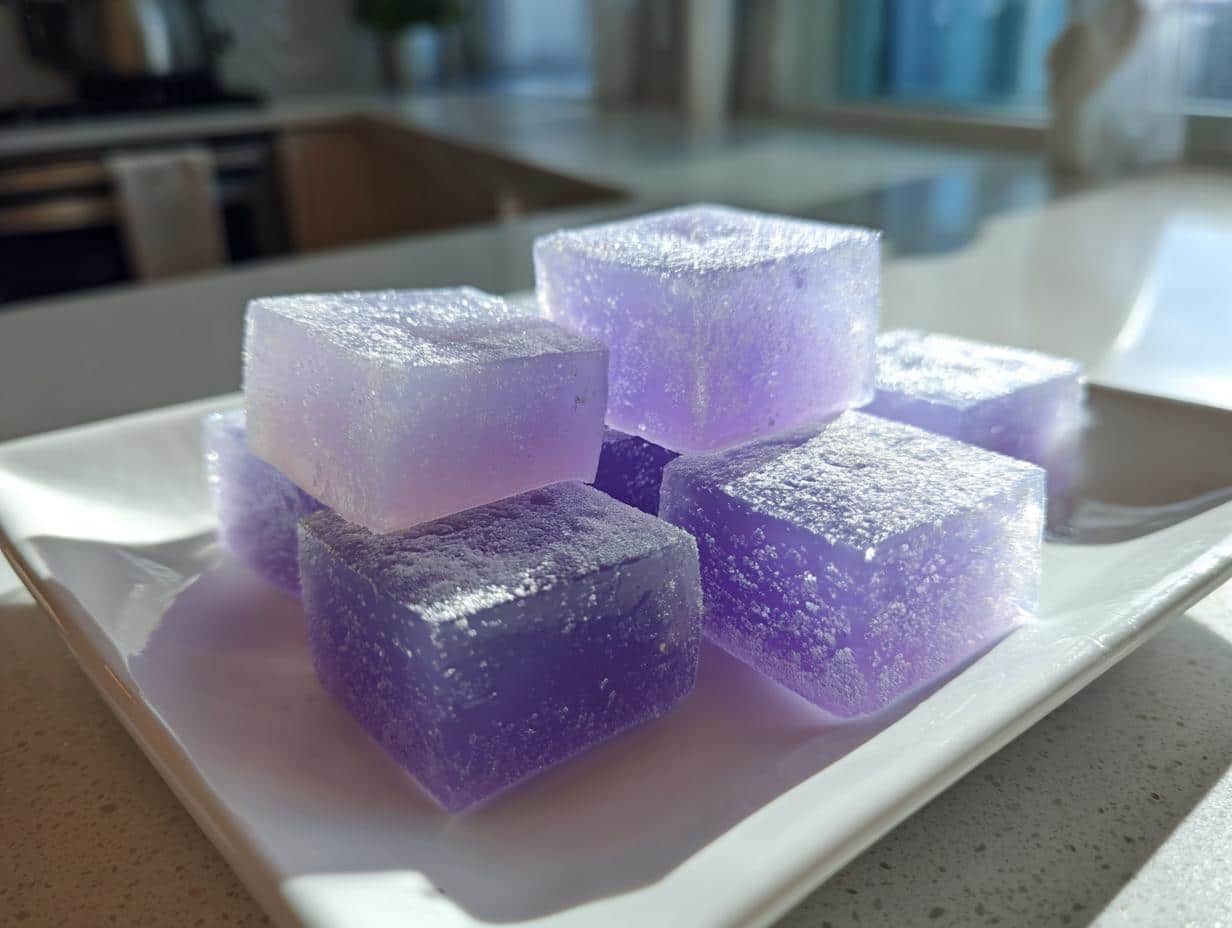Feeding your dog isn’t just about filling a bowl—it’s about nourishing your pup with ingredients that support their health, vitality, and happiness. More dog owners across the USA are asking, “Is homemade dog food safe?” or “What does my vet really recommend?” The truth is, vet-approved homemade dog food is gaining traction as a healthier, more trustworthy alternative to commercial brands.
In this guide, we’ll unpack everything from the benefits of vet-approved homemade dog food to the exact ratios veterinarians recommend, the ingredients that matter, and even some healthy treat options. Whether you’re caring for a picky eater, a senior dog, or just want to avoid preservatives and fillers, this guide is designed to help you cook with confidence.
Table of Contents
1. Why Choose Vet-Approved Homemade Dog Food?
Benefits of Homemade Dog Food for Long-Term Health
When you prepare meals at home, you’re in full control—no hidden additives, mystery meats, or artificial preservatives. Dogs fed on balanced, fresh, home-prepared meals often experience:
- Shinier coats
- Improved digestion and fewer allergies
- Better weight control and muscle tone
- Healthier stools and less odor
Homemade meals allow you to adjust your dog’s diet to meet unique needs: whether that’s low-fat meals for pancreatitis, grain-free recipes for allergies, or high-protein dishes for active dogs. You’re not guessing what’s in the bag—you’re choosing every ingredient.
And let’s not forget the emotional benefit. Cooking for your pup strengthens the bond between you and your dog, giving them meals made with love and intention.
Concerns About Store-Bought Kibble and Processed Pet Foods
While some commercial dog foods meet minimum AAFCO standards, many are over-processed, filled with preservatives, or made with low-grade ingredients. Some even contain unnamed “meat meals” or by-products you’d never feed knowingly.
Over time, diets high in artificial additives and poor-quality proteins may contribute to obesity, inflammation, and chronic diseases.
That’s why so many pet parents are turning to vet-approved homemade dog food, where quality, transparency, and health take center stage.
2. Do Veterinarians Recommend Homemade Dog Food?
What Most Vets Say About Homemade Diets
Veterinarians used to be cautious about homemade diets—but not anymore. Today, more holistic and integrative vets support homemade meals as long as they’re:
- Balanced for the dog’s life stage
- Rich in whole foods (lean meat, vegetables, grains)
- Supplemented with necessary vitamins and minerals
- Free from common toxins or allergens
In fact, the American College of Veterinary Nutrition (ACVN) encourages homemade dog food as long as the recipe is properly balanced and formulated under professional guidance.
Veterinarians may recommend homemade dog food in cases of:
- Chronic gastrointestinal issues
- Kidney or liver disease
- Skin conditions and food allergies
- Weight management and joint support
- Recovery diets after surgery or illness
The key here is “vet-approved.” Not all homemade meals are healthy. You still need the right ratios and nutrients to support organ function, energy, and growth.
Common Conditions That Benefit from Home-Cooked Meals
| Health Condition | Homemade Diet Benefit |
|---|---|
| Skin Allergies | Grain-free or novel protein recipes |
| Chronic Diarrhea | Easily digestible, bland meals (e.g. chicken and rice) |
| Kidney Disease | Low-protein, phosphorus-controlled recipes |
| Pancreatitis | Low-fat meals made from lean meats and carbs |
| Weight Control | Calorie-conscious, portion-controlled plans |
Don’t miss our Meaty Dog Treats Guide if you’re managing a sensitive pup—these healthy treats pair perfectly with homemade meals.
3. Understanding the Vet-Approved Nutrient Ratio
What is the Right Protein-Fat-Carb Balance?
Veterinarians often recommend this basic macronutrient split for adult dogs:
- Protein: 40–50% (lean meats like chicken, beef, fish, turkey)
- Carbohydrates: 25–30% (rice, oats, sweet potatoes)
- Fats: 20–30% (fish oil, flaxseed, chicken fat)
This ratio can change depending on your dog’s breed, age, weight, and activity level. For example:
- Senior dogs need slightly more fiber and less fat.
- Working dogs may require higher fat and protein for energy.
- Puppies need nutrient-dense, growth-supporting meals.
Here’s a quick example:
| Ingredient | Portion % |
|---|---|
| Ground turkey | 45% |
| Cooked brown rice | 25% |
| Steamed carrots + spinach | 20% |
| Flaxseed oil + supplements | 10% |
The focus keyword “Vet-Approved Homemade Dog Food” fits right here—this is a vet-approved dog food ratio that balances health and taste.
Supplements Vets Recommend for Balanced Dog Nutrition
Even the best homemade meals often lack certain micronutrients. That’s why most vet nutritionists recommend adding these:
- Calcium carbonate or bone meal (to replace bones in raw food)
- Omega-3 fatty acids (for coat health, brain function, inflammation)
- Multivitamin formulated for dogs
- Zinc and Iron (especially if your dog eats plant-based recipes)
- Vitamin E (for immune support)
Ask your vet about prescription-strength supplements or trusted canine brands like Balance IT, Rx Vitamins, or VetriScience.
Remember: homemade doesn’t mean guesswork. Even great recipes need a safety net of supplements to cover all bases.
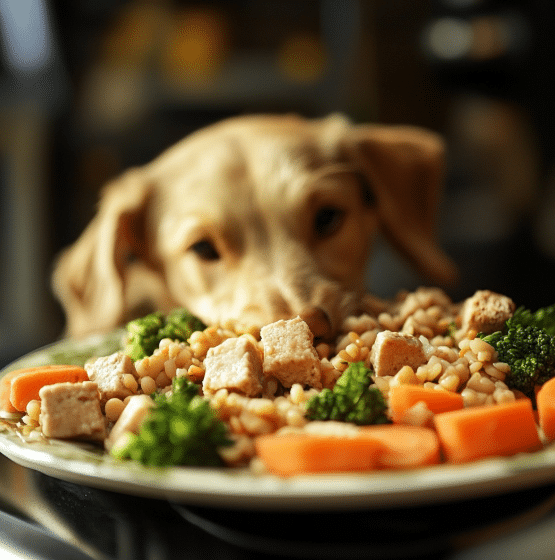
4. Key Ingredients for Homemade Dog Food Recipes
Top Vet-Approved Proteins (Beef, Chicken, Turkey, Fish)
The base of any vet-approved homemade dog food starts with quality protein. Dogs are omnivores, but protein plays a central role in muscle development, immune support, and energy.
Here are the best protein sources veterinarians recommend:
- Chicken breast or thighs (boneless, skinless)
- Lean ground beef (90% lean or better)
- Turkey (ground, breast, or thighs)
- Salmon and white fish (cooked and deboned)
- Eggs (scrambled or hard-boiled, no salt)
Avoid fatty cuts, processed meats (like bacon or sausage), and bones unless raw-fed and vet-supervised.
Healthy Carbs & Grains (Including: Can Dogs Eat White Rice?)
Yes—dogs can eat white rice, and it’s actually a go-to ingredient for digestive issues. It’s gentle, easily digestible, and ideal for bland diets. But it’s not the only option.
Healthy grains & carbs include:
| Carb Option | Benefit |
|---|---|
| White rice | Great for digestion, fast energy |
| Brown rice | Higher fiber, slow-releasing carbs |
| Sweet potatoes | Rich in fiber and Vitamin A |
| Oatmeal | Gluten-free, ideal for skin allergies |
| Pumpkin (plain) | Natural digestive aid |
Avoid corn, soy, or wheat if your dog shows food sensitivities.
Vegetables and Fruits Dogs Can Safely Eat
Vegetables add fiber, antioxidants, and phytonutrients to your dog’s diet. These are the vet-approved veggie picks:
- Carrots, green beans, spinach, kale, broccoli (lightly steamed)
- Zucchini, peas, butternut squash
- Blueberries, apples (no seeds), bananas, cranberries
Never feed onions, garlic, grapes, raisins, or avocado—these are toxic to dogs.
For more ideas, check out Sweet Potato and Oatmeal Dog Cake for a healthy veggie-rich treat.
5. Vet-Approved Homemade Dog Food Recipes
Now let’s dive into a few simple, vet-approved homemade dog food recipes that you can cook today with ingredients from your local grocery store.
Simple Chicken & Rice Meal for Beginners
Perfect for dogs with sensitive stomachs.
Ingredients:
- 1.5 lbs boneless chicken breast
- 1 cup white rice (cooked)
- ½ cup chopped carrots
- ¼ cup peas
- 1 tbsp fish oil
Instructions:
- Boil chicken until fully cooked; shred.
- Cook rice separately.
- Steam carrots and peas.
- Mix everything together, add oil, let cool, and portion.
Use within 3–4 days refrigerated.
Ground Beef & Sweet Potato Recipe
Looking for a hearty, balanced meal? This one’s packed with flavor and nutrients.
Ingredients:
- 1 lb lean ground beef
- 1 cup cooked sweet potato
- ½ cup chopped green beans
- ¼ cup oatmeal
- 1 tsp calcium carbonate or crushed eggshell powder
Instructions:
- Brown the ground beef, drain any fat.
- Cook and mash sweet potatoes.
- Mix with steamed green beans and oats.
- Add supplement, portion, and serve.
Discover great ideas like our Meaty Dog Treats Guide for more protein-packed meals.
Nutrient-Dense Vegan Option with Beans and Pumpkin
For dogs needing plant-based options (vet-approved only).
Ingredients:
- 1 cup lentils (cooked)
- ½ cup pumpkin puree
- ¼ cup quinoa
- ¼ cup chopped spinach
- 1 tsp olive oil
Instructions:
- Cook lentils and quinoa separately.
- Mix with pumpkin and sautéed spinach.
- Add olive oil and portion.
Always check with your vet before going plant-based—dogs still need essential amino acids from animal or supplemented sources.
6. How to Ensure Homemade Dog Food Is Balanced
Avoiding Deficiencies and Common Mistakes
While feeding homemade sounds simple, the risk of nutritional imbalances is real if recipes aren’t carefully formulated. Dogs require precise levels of amino acids, calcium, phosphorus, vitamins, and fatty acids.
Top mistakes to avoid:
- Feeding meat alone (leads to calcium deficiency)
- Skipping essential fatty acids
- Not rotating ingredients (causing food boredom or deficiencies)
- Avoiding supplementation when needed
Using Dog Food Calculators and Vet Consultations
The safest route? Use one of these tools or services:
| Tool/Service | What It Does |
|---|---|
| Balance IT® | Vet-designed online homemade recipe calculator |
| PetDietDesigner | Desktop software for pet meal planning |
| Pet nutritionist | Custom diets based on your dog’s condition |
Also, weigh your dog regularly and watch for red flags like:
- Dull coat or shedding
- Fatigue or behavioral shifts
- Unusual bowel changes
- Sudden weight gain or loss
If you’re unsure whether your recipe is on target, bring it to your vet or veterinary nutritionist for a full review.
Don’t miss our Apple and Cheese Dog Bone Pizza—not just a treat but part of a fun, balanced meal plan.
7. Vet-Approved Homemade Dog Treats
What Is the Healthiest Homemade Treat for a Dog?
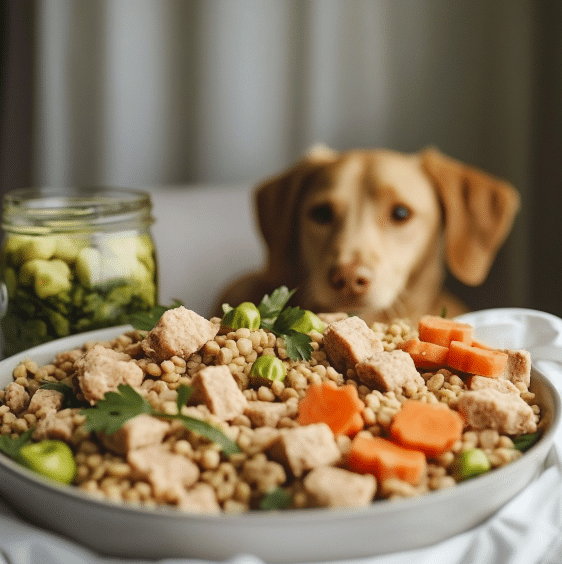
Homemade dog treats are more than just snacks—they’re opportunities to sneak in nutrients, support training, and bond with your pup. The healthiest homemade dog treats are:
- Low in fat and sugar
- Grain-free or gluten-free (if needed)
- Free of preservatives and artificial colors
- Rich in whole ingredients like pumpkin, sweet potato, oats, and apples
You don’t need a fancy kitchen to make them either. Just a few basic ingredients and a paw-shaped cookie cutter go a long way.
Some of the healthiest homemade treats include:
- Dehydrated chicken breast slices
- Frozen banana and peanut butter cubes
- Sweet potato chews
- Pumpkin & oat cookies
- Apple-carrot mini biscuits
Always avoid chocolate, xylitol, onions, and grapes in any form. These are toxic for dogs.
Discover Great Ideas Like:
If you’re unsure where to start, try these tried-and-tested treat recipes from the site:
- Sweet Potato and Oatmeal Dog Cake: A soft, nutritious cake perfect for birthdays or special rewards.
- Apple and Cheese Dog Bone Pizza: A tasty treat combining fruit and dairy in a pup-safe format.
Looking for inspiration? Try our full treat guide on Meaty Dog Treats for a protein-rich take on homemade snacks.
8. Storage, Portioning, and Feeding Guidelines
How to Store Homemade Dog Food Safely
Unlike commercial dog food, homemade meals don’t include preservatives. This makes proper storage essential for safety and freshness.
Refrigeration:
- Store in airtight containers for up to 3–4 days.
- Use BPA-free, freezer-safe containers to maintain freshness.
Freezing:
- Divide meals into daily servings and freeze.
- Use within 2–3 months for best quality.
- Label with preparation and expiration dates.
Pro tip: Freeze meals in silicone muffin trays, then transfer to freezer bags for easy, pre-portioned servings.
Portion Sizes by Dog Weight, Age, and Activity Level
Feeding too much or too little can cause major health issues. A simple formula vets use is:
- Adult dogs: 2–3% of their body weight per day
- Puppies: 5–8% of their body weight per day
Here’s a quick reference chart:
| Dog Weight (lbs) | Daily Food Amount (cups) |
|---|---|
| 10 lbs | ¾–1 cup |
| 25 lbs | 1.5–2 cups |
| 50 lbs | 2.5–3 cups |
| 75 lbs | 3.5–4.5 cups |
Adjust based on activity, health conditions, and treats.
Daily and Weekly Feeding Schedules
Split meals into two portions per day (AM and PM) to help digestion and prevent bloat. Treats should make up no more than 10% of the total daily calories.
For added structure:
| Time | Meal |
|---|---|
| 7:00 AM | Morning meal (50% daily food) |
| 12:00 PM | Small treat |
| 6:00 PM | Evening meal (50% daily food) |
You can also batch cook meals every Sunday to stay ahead of the week.
9. Transitioning from Commercial to Homemade Food
How to Gradually Introduce Homemade Meals
Switching too fast can cause digestive upset. Vets recommend a slow transition over 7–10 days, following this schedule:
| Day | Homemade | Kibble |
|---|---|---|
| 1–2 | 25% | 75% |
| 3–4 | 50% | 50% |
| 5–6 | 75% | 25% |
| 7+ | 100% | 0% |
Mix thoroughly to prevent your dog from picking out only the homemade portions.
Signs the transition is going well:
- Normal stools
- No vomiting
- Increased energy and alertness
- Enthusiastic eating
If you notice loose stools, reduce the percentage of homemade food and try again in a few days.
What Signs to Watch for in Your Dog’s Behavior and Digestion
Once fully transitioned to vet-approved homemade dog food, pay attention to subtle health signs.
Positive signs:
- Soft, shiny coat
- Normal, firm stool
- No gas or bloating
- Eager mealtimes
- Steady weight
Red flags:
- Lethargy or vomiting
- Constant diarrhea
- Itching or scratching
- Sudden weight loss or gain
If any negative symptoms persist, pause the diet and consult your vet immediately. It could be as simple as a protein intolerance or too much fat.
FAQs
Do veterinarians recommend homemade dog food?
Yes, many veterinarians support homemade diets—as long as they’re balanced and tailored to your dog’s needs. Vets often recommend home-cooked meals for dogs with allergies, obesity, GI issues, or chronic conditions. The key is to use recipes developed or reviewed by a veterinary nutritionist.
What is the vet-approved ratio for homemade dog food?
Most vets suggest a ratio of 40–50% protein, 25–30% carbs, and 20–30% healthy fats, along with essential vitamins and minerals. Keep in mind that calcium, omega-3s, and certain vitamins may need to be added through supplements to avoid deficiencies.
What is the healthiest homemade treat for a dog?
Some of the healthiest options include sweet potato chews, frozen banana bites, and baked pumpkin-oat biscuits. They’re low in fat, free of additives, and easy to digest. Try our Sweet Potato and Oatmeal Dog Cake for a vet-friendly option.
How do I make sure my homemade dog food is balanced?
Use vet-formulated recipes, dog food calculators like BalanceIT, and speak with a veterinary nutritionist. Ensure your recipe includes protein, fats, carbs, calcium, and vitamins in appropriate amounts. Always monitor your dog’s health and weight as you go.
Can dogs eat white rice?
Yes, white rice is commonly recommended for dogs with digestive issues. It’s easy to digest, low in fiber, and pairs well with lean proteins like chicken. Just avoid adding salt, spices, or oils.
Conclusion
Making vet-approved homemade dog food isn’t just about better ingredients—it’s about giving your pup a life filled with better health, longer vitality, and fewer vet visits. With the right ratios, safe ingredients, and a little planning, you can easily turn your kitchen into your dog’s favorite dining spot.
For more recipes follow me on PINTEREST

